Let's talk chips, but not the crunchy, bagged kind. I'm talking about the real deal – those golden, fluffy, crispy french fries that are the ultimate side dish and a snack that can brighten even the gloomiest day. As a Brit, I've been on a lifelong quest to achieve the perfect chip: crisp on the outside, fluffy on the inside, with a delicate golden hue. I've spent countless hours in my kitchen, experimenting with different techniques and recipes, all in pursuit of that ultimate chip experience. And let me tell you, the journey has been worth it! The key to making perfect fries isn't just the recipe, it's understanding the process, the techniques, and a whole lot of love (and maybe a bit of patience).
So, get comfy, grab a cuppa, and let's embark on a journey into the world of the perfect French fry. We'll cover everything from choosing the right potatoes to understanding the science behind that perfect crisp. By the end of this guide, you'll be a chip-making pro, whipping up batches of irresistible fries that'll have your friends and family begging for more.
(Part 1) Picking Your Potatoes: The Foundation of a Great Chip
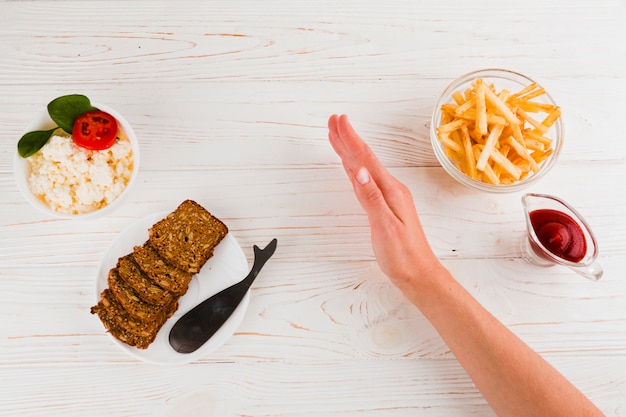
You can't just grab any old potato and expect to create a masterpiece. The perfect chip starts with the perfect spud. It needs to have the right balance of starch and moisture to give you that fantastic fluffy interior and irresistible crispy exterior. We're talking about those starchy, waxy types, the ones that hold their shape even when cooked. Here are my top picks for chip-worthy potatoes:
maris piper:
This is my go-to potato. Maris Pipers are a classic for a reason – they've got the ideal balance of starch and moisture, yielding that incredible fluffy texture with a beautifully crisp exterior. They’re widely available too, so you won't have trouble finding them at your local supermarket.
king edward:
Another classic, and for good reason. King Edwards are a bit drier than Maris Pipers, but they still hold their shape well, resulting in that lovely fluffy texture we're aiming for. They're also great at absorbing flavor, making them a perfect choice for loaded fries.
Desiree:
These potatoes are a bit more on the waxy side, but they hold their shape incredibly well, making them ideal for thicker cut fries. The downside is they can be a bit more prone to browning, so keep a close eye on them when cooking.
Now, avoid those fluffy, floury potatoes like Russets. They're perfect for mashing, but not for frying. You want that starchy, waxy texture, and Russets will just fall apart. Trust me, I've learned this the hard way!
(Part 2) Preparation: Setting the Stage for Chip Perfection
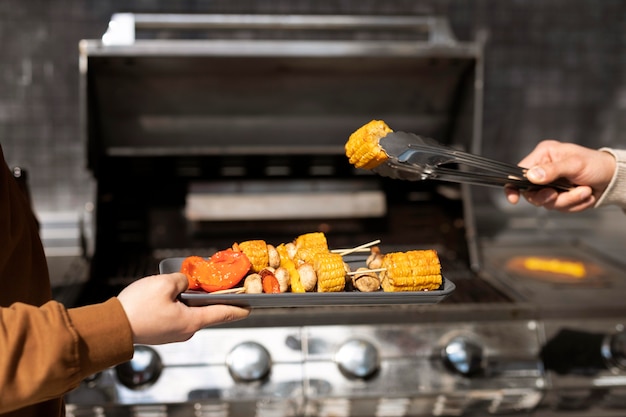
Once you've got your potatoes, it's time to prep them. This is where the magic truly begins, and trust me, it's crucial for achieving those perfect fries.
Washing and Peeling:
First, give your potatoes a good scrub under cold running water. You don't want any dirt or grit interfering with your crispness. Then, peel them. I use a good old-fashioned potato peeler, but you can also try a vegetable peeler or even just a sharp knife. Just make sure you get all that skin off!
Cutting and Soaking:
Now, it's time to cut your potatoes into those lovely chip shapes. I prefer thin, even fries – they cook faster and get extra crispy. But feel free to experiment with different shapes and sizes. Once you've cut your potatoes, it's time to soak them in cold water for at least 30 minutes. This helps remove excess starch, which can prevent your chips from getting crispy.
Drying:
After soaking, it’s absolutely crucial to dry those potatoes really well. Pat them dry with paper towels or a clean tea towel. Any remaining moisture will make them steam instead of crisp up, so don’t skip this step!
(Part 3) The Deep-Frying Technique: Achieving Crispness and Fluffiness
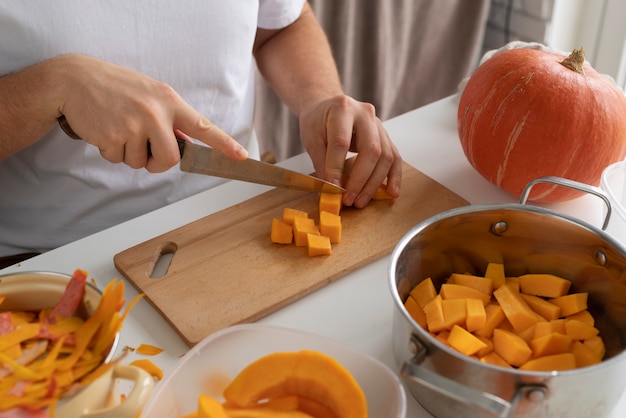
We've all been there, trying to achieve those perfectly crispy fries at home, only to end up with soggy and disappointing results. Deep-frying is the secret weapon! It’s the key to getting that incredible crispy exterior and fluffy interior. Just the thought of those golden chips emerging from the hot oil sends shivers down my spine – it's the sound of happiness!
The Oil:
Now, let’s talk about oil. It’s the golden key to crispy fries. I like to use vegetable oil – it’s affordable and has a high smoke point, meaning it can withstand high temperatures without breaking down. And remember, you need enough oil to submerge the potatoes completely, so make sure you have a large enough pot.
Heating:
Heat the oil to the right temperature, around 350°F (175°C). This is crucial for achieving that perfect crisp. Use a thermometer to check the oil temperature – it’s worth the investment! If the oil is too hot, the chips will burn on the outside before they cook through. If it's too cold, they'll absorb too much oil and be greasy.
Frying:
Finally, it’s time to fry! Gently lower your chips into the hot oil, making sure not to overcrowd the pan. Fry them for about 3-4 minutes, or until they’re golden brown. You'll know they're ready when they start to float to the surface.
Cooling and Resting:
Remove the chips from the oil and let them rest on a wire rack lined with paper towels to drain excess oil. This is important! Don’t just pile them all into a bowl! This resting time allows the chips to crisp up even further.
Double-Frying:
Here's a little secret that takes fries to the next level – double frying! After the initial fry, let the chips cool down completely. Then, heat the oil to 375°F (190°C) and fry them for another 1-2 minutes. This gives you an extra crispy exterior and a fluffier interior. It’s a bit more work, but totally worth it!
(Part 4) Seasoning and Serving: The Finishing Touches
Now, your chips are ready for the final stage – seasoning and serving. Let's get those taste buds tingling!
Salt and Pepper:
Start with the basics – salt and freshly ground black pepper. A good sprinkle of each brings out the natural flavors of the chips. I'm partial to sea salt – it has a more complex flavor than regular table salt.
Other Seasoning Options:
Get creative with your seasonings! The possibilities are endless. Here are a few ideas that I love:
- Garlic Powder and Paprika: A spicy and savory combo that's perfect for a hearty meal.
- Cayenne Pepper: Add a little heat and a kick to your fries.
- Herbs: Fresh parsley, chives, or rosemary are great options for adding a touch of freshness and flavor.
- Cheese: Grated Parmesan or cheddar are delicious sprinkled on top, adding a savory richness.
- Bacon Bits: Who doesn't love bacon? Crumble some cooked bacon on top for a smoky, salty flavor explosion.
You can even try more adventurous options like paprika, chili powder, or curry powder! The best part is, you can create your own signature chip seasoning.
Serving:
Serve your perfect French fries hot and fresh! I like to keep them warm in a preheated oven until I'm ready to eat. But, let's be honest, you'll probably gobble them up before they even get to the oven!
(Part 5) Variations and Alternative Methods
While deep-frying is my go-to method, I know that not everyone has a deep fryer or is comfortable using one. Don't worry – there are other ways to achieve those delicious crispy fries.
Oven-Baked Fries:
For a healthier option, oven-baking is a great alternative. Preheat your oven to 400°F (200°C) and toss the prepared chips in olive oil, salt, and pepper. Spread them on a baking sheet and bake for about 20-25 minutes, flipping them halfway through. You'll get a satisfyingly crispy texture, although it might not be as intensely crispy as deep-fried fries.
Air Fryer:
Air fryers are becoming increasingly popular, and they're a great way to cook crispy fries without all the oil. Toss your prepared chips in a little olive oil, salt, and pepper, and then air-fry them at 400°F (200°C) for about 10-15 minutes, shaking the basket halfway through. You’ll get a crispy exterior and a fluffy interior, and you’ll save on oil and calories.
(Part 6) Troubleshooting: Common Chip-Making Challenges
We've all been there. You follow the recipe carefully, but your fries end up soggy or burnt. It can be frustrating, but don't despair! Here are some common challenges and how to overcome them:
Soggy Fries:
If your fries are soggy, it’s likely that they weren’t dried properly before frying or that the oil wasn't hot enough. Make sure to pat your chips dry with paper towels before frying, and heat the oil to the correct temperature (350°F or 175°C).
Burnt Fries:
Burnt fries are a sign that the oil was too hot. Reduce the heat and watch them carefully. And don’t overcrowd the pan! This will also prevent burning.
Unevenly Cooked Fries:
If your fries are unevenly cooked, it could be because they were cut unevenly or because the oil wasn't hot enough. Cut your potatoes into even pieces, and heat the oil to the correct temperature.
Not Crispy Enough:
If your fries aren't crispy enough, try double-frying them. This will give them an extra-crispy exterior. Or, try using a higher-quality oil with a higher smoke point.
(Part 7) Beyond the Basic: Experimenting with Flavors
Now that you've mastered the basics, it's time to get creative and have some fun! Try adding different seasonings and toppings to your fries. Here are a few ideas to get you started:
Spicy Fries:
Add some spice to your life! Try tossing your fries in a blend of cayenne pepper, paprika, and garlic powder. Or, make a spicy mayo dipping sauce with sriracha or hot sauce.
Cheesy Fries:
Who doesn't love cheese? Grate some cheddar or Parmesan cheese over your fries, or try a cheesy sauce made with melted cheese and cream.
sweet potato Fries:
sweet potatoes are a fantastic alternative to regular potatoes. They're naturally sweeter and have a vibrant orange color. Simply follow the same instructions as above, but use sweet potatoes instead of regular potatoes. They are best paired with a sweet and spicy dipping sauce.
Loaded Fries:
Take your fries to the next level with a loaded fries creation. Start with a base of crispy fries, then add your favorite toppings, like cheese, bacon, jalape??os, onions, salsa, sour cream, guacamole, and more.
(Part 8) The Science of the Perfect Chip
Let’s get a bit scientific, shall we? There’s a reason why certain techniques work better than others. Understanding the science behind the perfect chip can help you achieve those crispy, fluffy results every time.
Starch and Moisture:
starchy potatoes are essential for fluffy fries. When you heat potatoes, the starch granules absorb water and expand, creating a fluffy interior. waxy potatoes, on the other hand, have less starch and hold their shape better, resulting in a crisp exterior.
Frying Temperature:
The temperature of the oil is crucial for achieving that perfect crisp. If the oil is too cold, the fries will absorb too much oil and become greasy. If the oil is too hot, the fries will burn before they cook through.
Surface Area:
The more surface area a potato has, the crispier it will be. That’s why thin fries tend to be crispier than thick fries. They have more surface area exposed to the hot oil, which allows them to crisp up faster.
Maillard Reaction:
The Maillard reaction is a chemical reaction that occurs when sugars and amino acids in food are heated. It’s responsible for the browning and flavor development that gives fries their delicious golden color and savory flavor.
Double-Frying:
Double-frying is a technique that helps to achieve an even crispier exterior. The first fry cooks the fries through and develops a slight crust. The second fry crisps up the crust and creates a more intense crunch.
(Part 9) FAQs: Your Chip-Making Questions Answered
It's time to address those burning questions you've been having about creating the perfect chip!
1. What is the best oil for frying chips?
Vegetable oil is a great choice for frying chips. It has a high smoke point, meaning it can withstand high temperatures without breaking down. You can also use other oils like canola oil, peanut oil, or sunflower oil.
2. Can I use a deep fryer to make chips?
Yes, a deep fryer is a fantastic way to make perfect chips. Just be sure to follow the manufacturer's instructions for safe operation.
3. How do I know if the oil is hot enough?
Use a deep-fry thermometer to check the oil temperature. It’s the most accurate way to ensure that the oil is hot enough.
4. Can I make chips in the oven?
Yes, you can bake chips in the oven. Preheat the oven to 400°F (200°C) and toss your prepared chips in olive oil, salt, and pepper. Spread them on a baking sheet and bake for about 20-25 minutes, flipping them halfway through.
5. Can I make chips in an air fryer?
Yes, you can make chips in an air fryer. Toss your prepared chips in a little olive oil, salt, and pepper, and then air-fry them at 400°F (200°C) for about 10-15 minutes, shaking the basket halfway through.
So there you have it, my ultimate guide to making crispy perfect French fries! Now you've got the knowledge, the techniques, and the inspiration to create those delicious chips that will make everyone around you happy! Just remember, have fun, experiment, and most importantly, enjoy the process of creating your very own perfect fries.
(Part 10) The Chip-Making Journey Continues
As a seasoned chip enthusiast, I can tell you that the journey to the perfect fry never truly ends. There's always something new to discover, a new technique to try, or a new flavor combination to explore. So, keep experimenting, keep learning, and keep enjoying those delicious, crispy, fluffy French fries!
(Part 11) Chip-Making Tips and Tricks
Here are a few extra tips and tricks that I've picked up along the way:
- Use a mandoline: A mandoline is a kitchen tool that can help you cut potatoes into thin, even slices. This will ensure that your fries cook evenly and get extra crispy.
- Don't overcrowd the pan: If you overcrowd the pan, the temperature of the oil will drop, and your fries won't cook evenly. Fry your chips in batches if necessary.
- Don't salt the chips before frying: Salting your chips before frying will cause them to absorb more water, which will make them soggy. Salt your chips after they are fried.
- Try different dipping sauces: Ketchup is a classic dipping sauce, but there are many other delicious options, such as mayonnaise, ranch dressing, sriracha mayo, or even a sweet chili sauce.
- Get creative with your toppings: The possibilities are endless when it comes to topping your fries! Try cheese, bacon, jalapenos, onions, salsa, sour cream, guacamole, and more.
There you have it - a complete guide to the perfect French fry. Now, go forth and conquer the world of crispy perfection!
Everyone is watching

Perfect Rice Every Time: The Ultimate Guide to Cooking Rice
Cooking TipsAs a self-proclaimed foodie, I've always been a bit obsessed with rice. It's the foundation of countless cuisi...

Ultimate Guide to Cooking the Perfect Thanksgiving Turkey
Cooking TipsThanksgiving. Just the word conjures up images of overflowing tables laden with delicious food, the scent of r...

The Ultimate Guide to Cooking Asparagus: Tips, Techniques, and Recipes
Cooking TipsAsparagus. The mere mention of this spring delicacy conjures up images of vibrant green spears, crisp and burs...
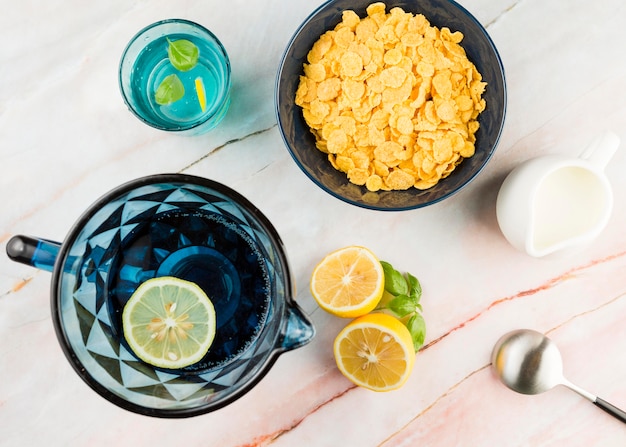
Can You Cook Spaghetti with Gasoline? (The Shocking Truth)
Cooking TipsWe've all seen those crazy internet trends. You know, the ones that make you wonder, "Did someone actually try...
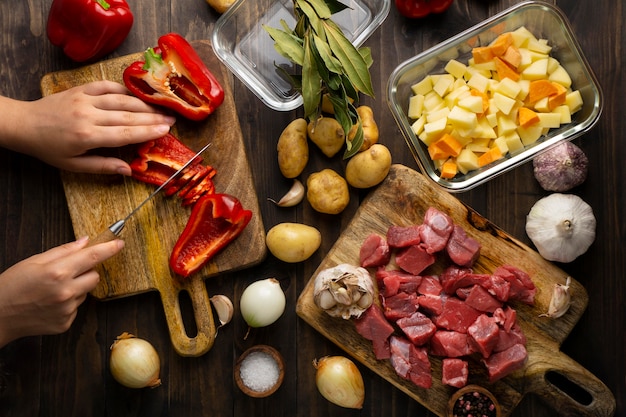
Chorizo and Eggs Recipe: The Ultimate Guide
Cooking TipsRight, let’s talk about chorizo and eggs. You know, that classic Spanish dish that's always a winner. It's th...
